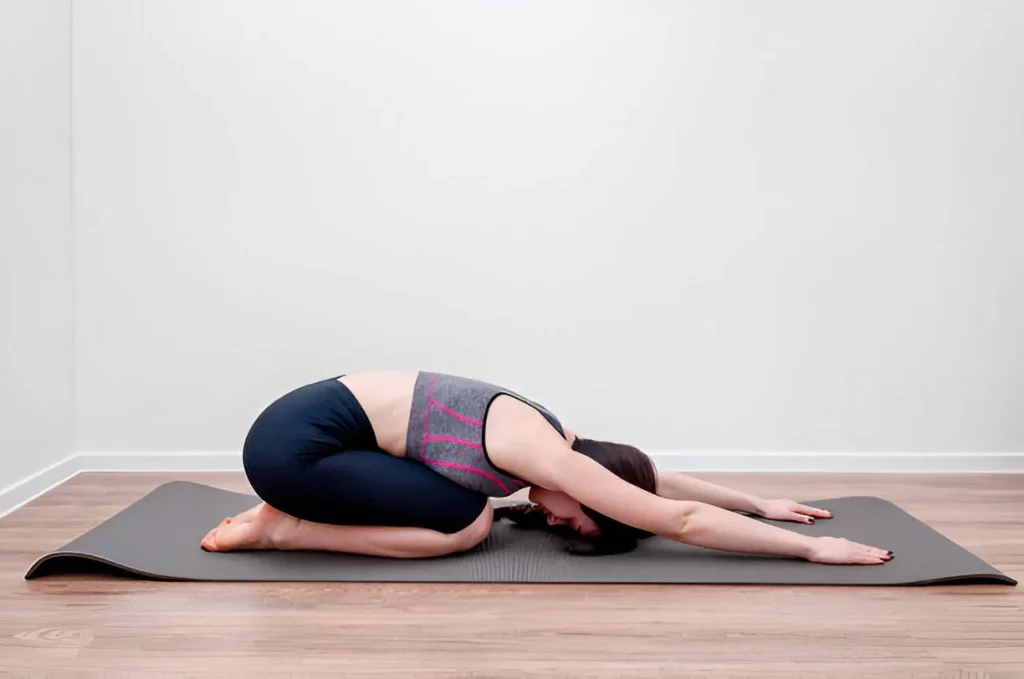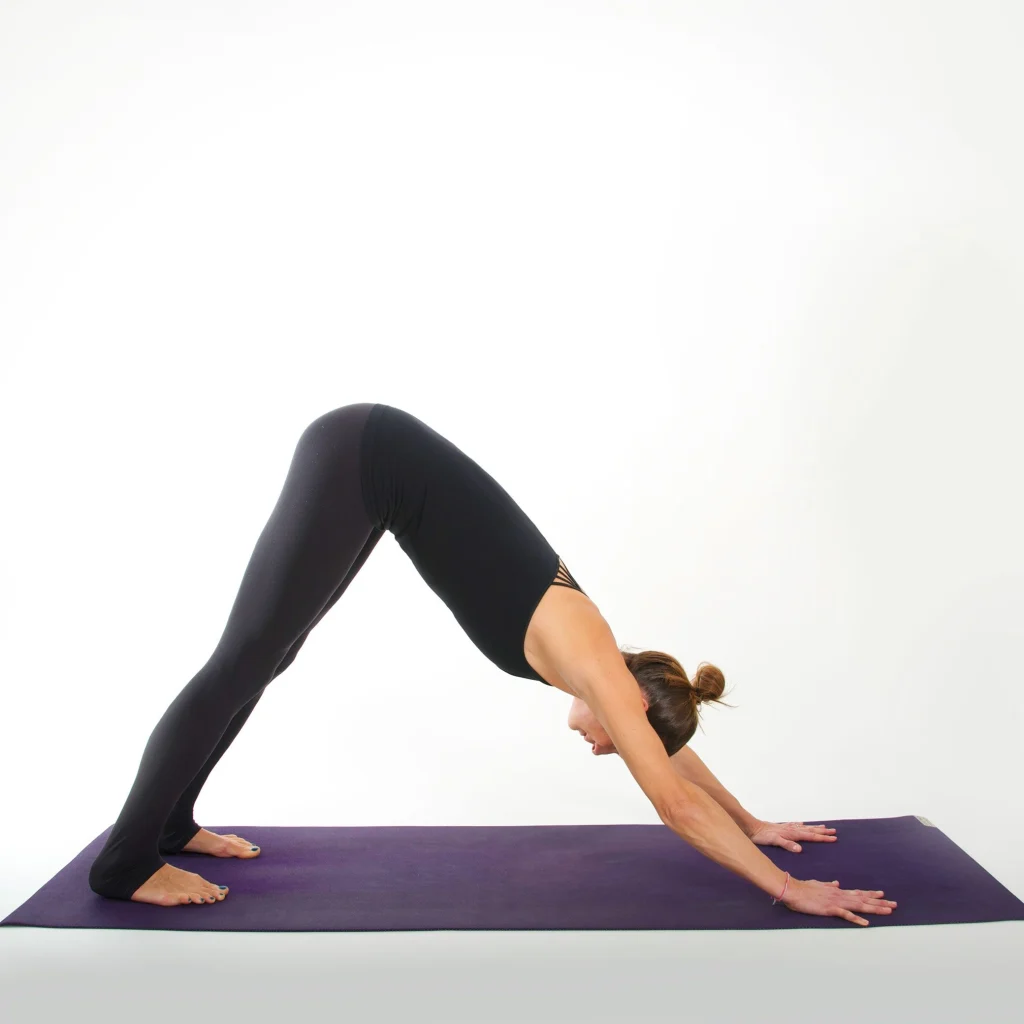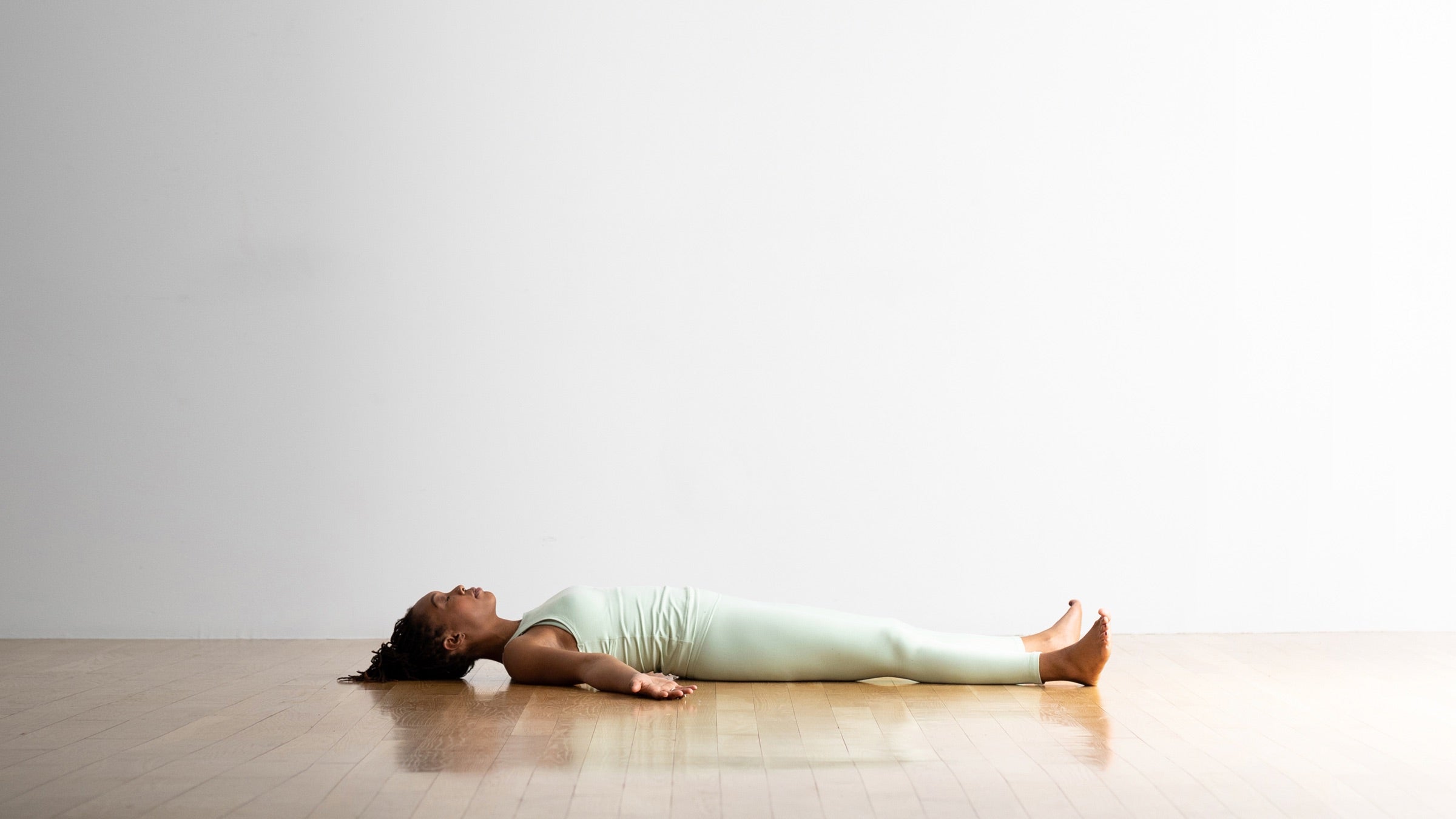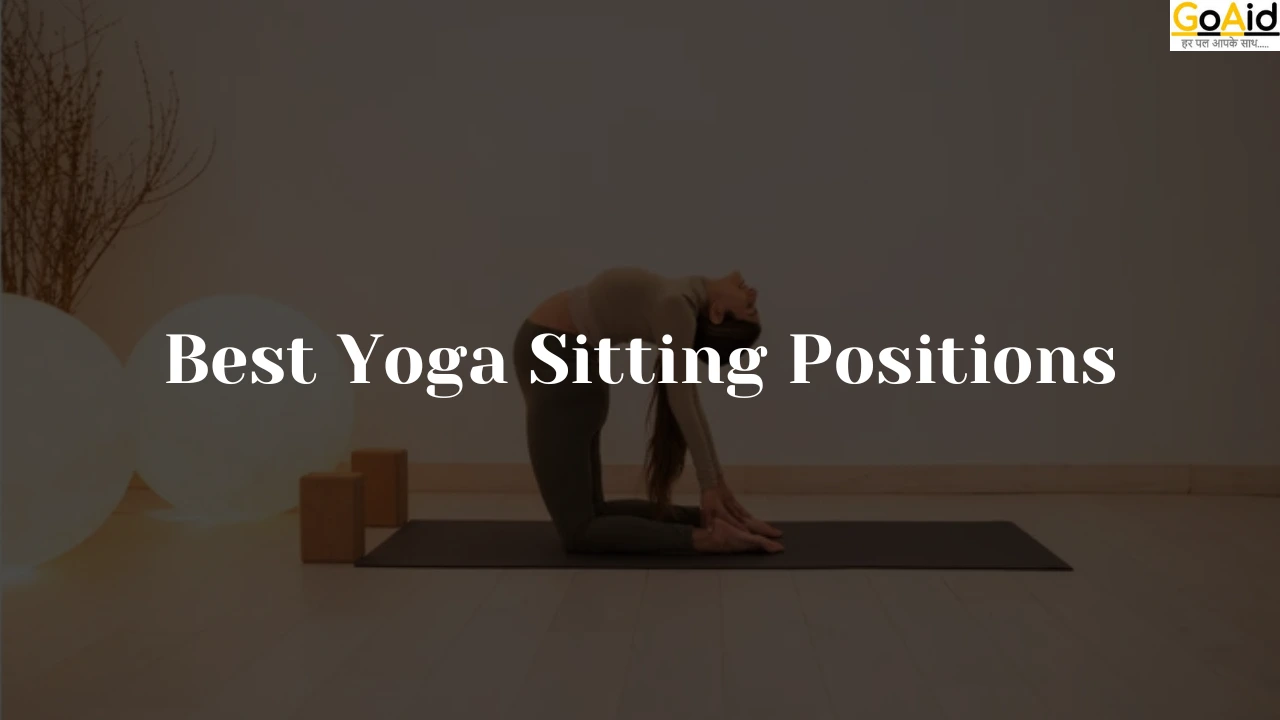If you are feeling unwell and itŌĆÖs been a long time since you’ve felt the same, then itŌĆÖs time to add Yoga to your daily routine. Yoga, popularly known as Yogasan, has made life easy for many. However, if you are new to this, you need some ŌĆśYoga for BeginnersŌĆÖ before jumping to the expert-level Yoga Asanas or Yoga sitting positions.
If you are willing to know about the ŌĆśbest yoga positions for me then in this blog we have added comprehensive detail about the Yoga Sitting positions by starting it to the very beginner level to the expertŌĆÖs extent. In this blog, we have explained Yoga, its benefits, a few of the of the best yoga positions for beginners, the top 10 yoga sitting positions, and many questions too, that may concern you after reading this blog. Are you excited to know all of these? Then read this blog to the end.
So, letŌĆÖs start-
What is Yoga?
Yoga is an ancient Indian practice that harmonizes the mind, body, and spirit. A few physical postures, like breathing techniques, and meditation help to get this to you. Yoga is an ancient Indian practice that has been around for over 5,000 years. Yoga is more than just physical exercise it is a holistic approach to well-being. The term “yoga” comes from the Sanskrit word yuj, which means “to unite” or “to joinŌĆØ. This symbolizes the connection between the self and the universal consciousness.
Yoga promotes flexibility, strength, and mental clarity while reducing stress and anxiety. It encompasses various disciplines, including Hatha Yoga for physical well-being, Raja Yoga for mental focus, and Bhakti Yoga for spiritual devotion. Whether youŌĆÖre a beginner or an advanced practitioner, yoga offers a path to inner peace and improved health.
Modern yoga often emphasizes postures and fitness, but its core remains a transformative practice that fosters balance in all aspects of life.
Read More: Full Details About Sitting Positions | Sitting Positions Types, Benefits, & Sitting Positions Names
Benefits of Yoga
Yoga offers numerous physical, mental, and emotional benefits to anyone who performs it. By adding yoga to regular practice, individuals can enhance flexibility, strength, and mental clarity while reducing stress. Here are some key benefits of yoga to improve overall well-being:
1. Improved Flexibility
Yoga helps stretch and lengthen muscles, improving overall flexibility. It reduces stiffness, enhances mobility, and promotes better posture.
2. Strengthens Muscles
Regular yoga practice strengthens various muscle groups, improving endurance and balance. It helps tone muscles, making the body more resilient.
3. Increases Mental Clarity
Yoga enhances focus and concentration through mindfulness. It clears the mind, reduces mental clutter, and helps improve decision-making.
4. Reduces Stress and Anxiety
Yoga encourages relaxation and stress relief by focusing on deep breathing. It activates the parasympathetic nervous system, promoting calmness.
Also Read: What is a Hearse Van?
5. Boosts Circulation
The various postures in yoga promote blood flow, which improves circulation and oxygenates the body, contributing to better cardiovascular health.
6. Enhances Posture
Yoga strengthens the core and back muscles, improving posture. It helps align the spine and reduces the risk of back pain.
7. Detoxifies the Body
Certain yoga poses aid detoxification by promoting better digestion and stimulating the organs. It helps flush out toxins from the body.
8. Improves Breathing
Yoga practices focus on breath control, increasing lung capacity, and improving oxygen flow. This supports better respiratory health.
9. Promotes Better Sleep
Regular yoga helps calm the mind and body, improving sleep quality and duration.
10. Boosts Immunity
Yoga helps strengthen the immune system by improving circulation, enhancing digestion, and reducing inflammation, making the body more resilient.
Know More: The Essential Role of Emergency Ambulance Services in Public Health
Best Yoga Positions for Beginners
Yoga provides an accessible way to improve your physical and mental health. Beginners can start with basic yet effective poses that develop strength, flexibility, and relaxation. Here are ten beginner-friendly yoga positions to begin your journey.
1. Mountain Pose ŌĆō Tadasana

This foundational standing pose forms the basis for many other yoga postures. It focuses on proper alignment and balance, helping you develop mindfulness and body awareness. Practicing Tadasana enhances stability and prepares you for more complex poses in your yoga practice.
- Enhances body alignment and posture
- Strengthens thighs and core muscles
- Improves focus and balance
Know More: Hospital Department List: Everything You Need to Know
2. ChildŌĆÖs Pose ŌĆō Balasana

ChildŌĆÖs Pose is a restorative pose that gently stretches the lower back, hips, and thighs. It promotes relaxation and provides a moment of rest during your yoga session. This pose helps calm the mind and alleviate stress, making it perfect for beginners.
- Stretches lower back and hips
- Relieves stress and fatigue
- Promotes calmness and relaxation
3. Downward Dog ŌĆō Adho Mukha Svanasana

This rejuvenating pose stretches the entire body, increasing flexibility and strength. Downward Dog improves circulation, energizes the mind, and works for multiple muscle groups. It is a versatile pose that can be modified for beginners as they build their practice.
- Stretches hamstrings and shoulders
- Strengthens arms and legs
- Boosts blood circulation
Also Read: Book Ambulance Service from Patna to Delhi
4. Cat-Cow Pose ŌĆō Marjaryasana-Bitilasana

A gentle, flowing sequence of two poses, Cat-Cow helps increase flexibility in the spine and relieve tension. ItŌĆÖs a great warm-up for the back and neck, improving posture and reducing stiffness.
- Improves spinal flexibility
- Relieves back and neck tension
- Enhances body awareness
5. Seated Forward Bend ŌĆō Paschimottanasana

This calming pose stretches the back and hamstrings while promoting relaxation. It encourages deep breathing and helps reduce anxiety. It is a perfect pose to cool down after a session or start your practice mindfully.
- Stretches spine, shoulders, and hamstrings
- It calms the mind and reduces stress
- Improves digestion
6. Cobra Pose ŌĆō Bhujangasana

Cobra Pose strengthens the back muscles and enhances flexibility in the spine. It opens the chest, improves posture, and helps relieve mild back pain. Ideal for counteracting the effects of prolonged sitting.
- Strengthens back and shoulders
- Improves spinal flexibility
- Opens the chest and lungs
7. Bridge Pose ŌĆō Setu Bandhasana

This pose strengthens the back, glutes, and thighs while opening the chest. It helps alleviate stress and fatigue, providing a gentle inversion to improve circulation and energize the body.
- Strengthens legs and lower back
- Opens the chest and improves lung capacity
- Relieves stress and fatigue
8. Tree Pose ŌĆō Vrikshasana

A balancing pose that builds focus and concentration, Tree Pose strengthens the legs and core while enhancing stability. ItŌĆÖs perfect for grounding yourself and practicing mindfulness in your yoga routine.
- Improves balance and stability
- Strengthens legs and core muscles
- Enhances focus and concentration
9. Butterfly Pose ŌĆō Baddha Konasana

This seated pose opens the hips and groin, improving flexibility in the inner thighs. It promotes relaxation and is particularly beneficial for those with tight hips or lower back stiffness.
- Improves hip and groin flexibility
- Relieves tension in the lower back
- Stimulates circulation
10. Corpse Pose ŌĆō Savasana

A relaxing pose at the end of your practice, Savasana helps integrate the benefits of yoga by calming the mind and body. ItŌĆÖs a time for deep relaxation and mindfulness, promoting overall well-being.
- Relaxes the entire body
- Reduces stress and anxiety
- Enhances mindfulness and clarity
Top 10 Yoga Sitting Positions
We have added comprehensive details about the Top 10 Yoga Sitting Positions. Now, youŌĆÖll get to know about the names of the Top 10 Yoga Sitting Positions, how to perform that particular Yoga Sitting Position and their related benefits.
1. Easy Pose ŌĆō Sukhasana

The Easy Pose, Sukhasana, is one of the most basic Yoga Sitting Positions, ideal for beginners. This Pose is commonly used for meditation and mindfulness practices. It promotes relaxation, calmness, and a connection to inner peace, making it a foundational sitting yoga pose in many practices.
How to Perform Sukhasana?
Follow these steps to perform this seated pose yoga:
- Sit on a yoga mat with your legs extended in front of you.
- Cross your legs, placing each foot beneath the opposite knee, forming a triangular base.
- Ensure your knees are close to the floor and your spine is straight.
- Place your hands gently on your knees or thighs, palms facing upward.
- Align your head, neck, and back straight for proper posture.
- Relax your shoulders and broaden your chest slightly.
- Close your eyes and take slow, deep breaths.
- Maintain the pose for a few minutes, focusing on your breathing.
- To exit, uncross your legs and stretch them forward.
Benefits of Sukhasana
- Encourages relaxation and mindfulness
- Improves flexibility in the hips, knees, and ankles
- Promotes better posture and spinal alignment
- Serves as an excellent sitting position in yoga for meditation
- Calms the mind and reduces anxiety
- Enhances focus and concentration
- Stimulates the back muscles, preventing stiffness
- Offers a stable base for various seated yoga pose sequences
Read More: Top 10 Best Neurology Hospitals in Kolkata
2. Lotus Pose ŌĆō Padmasana

Lotus Pose ŌĆō Padmasana is a classic yoga seated pose widely recognized for its benefits in meditation and spiritual practices. This advanced sitting position yoga requires flexibility and strengthens the body while fostering deep mental focus. It is one of the Best Yoga Positions for those looking to enhance their meditative experiences.
How to Perform Padmasana?
HereŌĆÖs how to practice this iconic sitting yoga pose:
- Sit on a yoga mat with your legs extended straight.
- Bend your right knee and place the right foot over your left thigh, with the sole facing upward.
- Bend your left knee and place the left foot over your right thigh in the same manner.
- Ensure both knees touch the floor and your spine remains straight.
- Rest your hands on your knees in a mudra (e.g., Gyan Mudra).
- Keep your head and neck aligned with your spine.
- Close your eyes, breathe deeply, and hold the pose for a few minutes.
- To exit, gently release one leg at a time and stretch it forward.
Benefits of Padmasana
- Deepens meditation and promotes inner peace
- Improves flexibility in the hips, knees, and ankles
- Strengthens the spine and back muscles
- Encourages proper posture during meditation
- Enhances circulation to the pelvic region
- Relieves tension and stress, calming the mind
- Helps in balancing the body and mind
- Provides stability for other advanced sitting poses yoga
- Supports mindfulness and spiritual focus
3. Hero Pose ŌĆō Virasana

Hero Pose ŌĆō Virasana is a powerful Yoga Sitting Position that stretches the thighs, knees, and ankles. It is a calming sitting yoga asana frequently used for meditation and breathwork. Virasana enhances circulation and flexibility while improving posture and grounding the mind.
How to Perform Virasana?
Follow these steps to achieve the seated pose yoga:
- Start by kneeling on the floor with your knees bent and feet slightly apart, hip-width distance.
- Sit back onto your shins, with your thighs resting on the floor and your feet pointing straight back.
- Ensure your hips are grounded between your feet and your sit bones are rooted on the mat.
- Place your hands on your thighs with your palms facing down or up.
- Keep your spine straight and elongate your neck.
- Relax your shoulders and keep your chest open.
- Breathe deeply and hold the pose for as long as it is comfortable.
- To exit, slowly rise and stretch your legs forward.
Benefits of Virasana
- Stretches thighs, knees, and ankles
- Enhances flexibility and posture
- Improves digestion by stimulating abdominal organs
- Relieves tension in the lower back and hips
- Reduces fatigue and promotes mental clarity
- Increases circulation to the legs
- Promotes grounding and mindfulness
- Perfect for improving flexibility in sitting yoga poses
4. Seated Forward Bend ŌĆō Paschimottanasana

Seated Forward Bend ŌĆō Paschimottanasana is a beneficial sitting position yoga that stretches the entire back, hamstrings, and spine. ItŌĆÖs a calming yoga seated pose that helps relieve stress and improve flexibility. This pose is often included in yoga sequences for beginners to build a strong and flexible body.
How to Perform Paschimottanasana?
Follow these steps to practice Paschimottanasana:
- Sit on a yoga mat with your legs extended straight in front of you.
- Keep your feet flexed and together, and your thighs pressed into the floor.
- Inhale, lengthen your spine and sit tall.
- As you exhale, gently hinge at the hips and reach forward, bringing your chest towards your thighs.
- Keep your back straight and avoid rounding your spine.
- Grab your feet or place your hands on your shins, wrists, or ankles, depending on your flexibility.
- Hold the position for 30 seconds to 1 minute, breathing deeply.
- To exit, slowly rise by lengthening the spine and sitting upright.
Also Read: Top 10 Heart Hospital in Chandigarh
Benefits of Paschimottanasana
- Stretches the hamstrings, spine, and back muscles
- Calms the mind and reduces stress
- Improves flexibility in the lower back
- Stimulates the digestive system
- Relieves tension and tightness in the back
- Promotes better posture and alignment
- Reduces anxiety and encourages relaxation
- Enhances flexibility and mobility for sitting poses yoga
5. Bound Angle Pose ŌĆō Baddha Konasana

Bound Angle Pose ŌĆō Baddha Konasana is a popular yoga seated pose that opens the hips, stretches the inner thighs, and improves flexibility. It is an ideal setting yoga asana for those looking to increase flexibility and strength while encouraging a sense of calm. This pose is also helpful for preparing the body for more advanced postures.
How to Perform Baddha Konasana?
Follow these steps to practice this seated yoga pose:
- Sit on the floor with your legs extended in front of you.
- Bend your knees and bring your feet toward your pelvis, placing the soles of your feet together.
- Hold your feet with your hands, interlacing your fingers around your toes or ankles.
- Sit up tall, lengthening your spine, and draw your shoulders back.
- Press your knees gently toward the floor, keeping your feet together.
- Keep your chest open and breathe deeply, holding the position for 30 seconds to 1 minute.
- To exit, gently release your feet and stretch your legs forward.
Benefits of Baddha Konasana
- Opens the hips and groin
- Stretches the inner thighs, knees, and ankles
- Improves posture and spinal alignment
- Relieves tension and discomfort in the lower back
- Helps in reducing stress and anxiety
- Stimulates the reproductive organs
- Encourages relaxation and mental clarity
- Perfect for improving flexibility in sitting yoga poses sequence
6. Staff Pose ŌĆō Dandasana

Staff Pose ŌĆō Dandasana is a fundamental yoga seated position that helps strengthen the spine, legs, and core. It is an excellent pose to begin a yoga practice, improving posture and creating a solid foundation for other sitting yoga poses. This pose emphasizes alignment, making it essential for all yoga practitioners.
How to Perform Dandasana?
HereŌĆÖs how to perform Dandasana:
- Sit on the floor with your legs extended straight in front of you.
- Keep your feet flexed and together, with the toes pointing up.
- Press the backs of your thighs and knees into the floor, activating the legs.
- Sit tall and engage your core muscles, keeping your spine long and straight.
- Place your hands on the floor beside your hips, with your fingers pointing forward.
- Keep your shoulders relaxed, chest open, and gaze forward.
- Hold the pose for 30 seconds to 1 minute, breathing deeply.
- To exit, gently release your hands and extend your legs forward.
Benefits of Dandasana
- Strengthens the back, legs, and core
- Improves posture and spinal alignment
- Enhances balance and stability
- Stimulates the abdominal muscles
- Increases flexibility in the hamstrings
- Relieves tension in the lower back
- Provides a solid foundation for other sitting yoga asanas
- Boosts focus and concentration
Know More: Top 10 Heart Hospitals in Hyderabad
7. Cow Face Pose ŌĆō Gomukhasana

Cow Face Pose ŌĆō Gomukhasana is a yoga seated pose that stretches the shoulders, arms, and hips. It helps to open the chest, improve posture, and release tension in the upper body. This pose is excellent for deepening flexibility and is often used to prepare the body for more complex sitting yoga asanas.
How to Perform Gomukhasana?
Follow these steps to perform Gomukhasana:
- Sit on the floor with your legs extended in front of you.
- Bend your knees and stack your right knee on top of your left knee, bringing both feet to the outer sides of your hips.
- Keep your feet close to your hips while ensuring both knees are aligned, one on top of the other.
- Reach your right arm behind your back and bring it upward.
- Reach your left arm behind your back from the other side and clasp your hands together.
- If your hands donŌĆÖt meet, use a yoga belt or strap to connect them.
- Sit up tall, keeping your spine elongated, and breathe deeply.
- Hold the pose for 30 seconds to 1 minute, then repeat on the other side.
Benefits of Gomukhasana
- Opens the shoulders, chest, and hips
- Improves flexibility in the upper body and arms
- Relieves tension in the back and neck
- Stimulates the digestive system
- Strengthens the arms, legs, and core
- Enhances posture and spinal alignment
- Improves circulation in the legs
- Encourages relaxation and mental clarity
8. Seated Twist ŌĆō Ardha Matsyendrasana

Seated Twist ŌĆō Ardha Matsyendrasana is a sitting yoga pose that involves a gentle spinal twist, promoting flexibility in the spine and detoxifying the body. ItŌĆÖs a great sitting position yoga for improving digestion, and spinal health and reducing stress. This pose also helps release tension in the lower back.
How to Perform Ardha Matsyendrasana?
Follow these steps to practice Ardha Matsyendrasana:
- Sit on the floor with your legs extended straight in front of you.
- Bend your right knee and place the right foot outside of your left thigh.
- Keep your left leg extended or bend it at the knee with the foot near your pelvis.
- Inhale and lengthen your spine.
- Exhale and twist your torso to the right, placing your left elbow outside your right knee.
- Keep your back straight and avoid collapsing your chest.
- Turn your head to gaze over your right shoulder.
- Hold the twist for 30 seconds to 1 minute, breathing deeply.
- To exit, slowly release the twist and repeat on the other side.
Benefits of Ardha Matsyendrasana
- Increases spinal flexibility and mobility
- Stimulates digestion and detoxifies the body
- Relieves tension and stiffness in the back
- Improves posture and alignment
- Opens the chest and shoulders
- Reduces stress and calms the nervous system
- Improves circulation and enhances flexibility in the hips
- Promotes better mobility in sitting yoga poses
Read More: RGHS Eye Hospital list Jaipur
9. Thunderbolt Pose ŌĆō Vajrasana

Thunderbolt Pose ŌĆō Vajrasana is a simple but powerful Yoga Sitting Position that is highly beneficial for meditation and digestion. This seated pose yoga is often used during breathing exercises, as it improves posture, promotes relaxation, and enhances overall well-being. It is considered one of the best easy yoga positions for beginners.
How to Perform Vajrasana?
Follow these steps to practice Vajrasana:
- Start by kneeling on the floor with your knees and feet together, and your big toes touching.
- Sit back onto your heels, with your thighs resting against your calves.
- Keep your spine straight and your chest open.
- Place your hands on your knees, palms facing upward or downward.
- Relax your shoulders, keep your head aligned with your spine, and gaze forward.
- Hold the position for 1-5 minutes, breathing deeply and steadily.
- To exit, gently rise by lifting your hips and returning to a sitting position with your legs extended.
Benefits of Vajrasana
- Improves digestion and alleviates digestive issues
- Relieves tension in the lower back and hips
- Helps with knee and ankle flexibility
- Promotes proper posture and spinal alignment
- Calms the mind and reduces stress
- Increases circulation to the lower body
- Supports meditation and mindfulness practices
- Strengthens the thighs, knees, and ankles
10. Half Lotus Pose ŌĆō Ardha Padmasana

Half Lotus Pose ŌĆō Ardha Padmasana is a variation of the classic Lotus Pose that offers many of the same benefits while being more accessible for beginners. This seated yoga pose helps to open the hips, improve flexibility, and promote mental focus during meditation or relaxation practices.
How to Perform Ardha Padmasana?
Follow these steps to practice Ardha Padmasana:
- Sit on the floor with your legs extended straight in front of you.
- Bend your right knee and place the right foot on the left thigh, bringing the sole to face upward.
- Keep the left leg extended or gently bend it to bring the left foot closer to the pelvis.
- Sit up tall, lengthening your spine, and relax your shoulders.
- Place your hands on your knees or in a mudra of your choice.
- Keep your chest open, and breathe deeply and steadily.
- Hold the pose for 30 seconds to 1 minute, then switch sides.
Benefits of Ardha Padmasana
- Opens the hips and stretches the groin
- Promotes flexibility in the knees, thighs, and ankles
- Calms the mind and improves focus
- Encourages deeper breathing and relaxation
- Strengthens the spine and improves posture
- Prepares the body for seated meditation
- Relieves tension in the lower back and pelvis
- Provides a grounding effect, improving mental clarity and mindfulness
Book Ambulance: GoAid Ambulance Service
Conclusion to the Yoga Sitting Positions
In conclusion, we have covered the best yoga sitting positions, including detailed steps for the top 10 sitting yoga asanas. These poses, from the easy yoga positions to more advanced ones, offer a wide range of benefits, from enhancing flexibility to promoting mental clarity. We have also highlighted the best yoga poses for beginners, making it easier for newcomers to start their practice.
Each of these seated pose yoga has its unique advantages, helping to strengthen muscles, improve posture, and aid in relaxation. By incorporating these yoga seated poses into your routine, you can enjoy better overall health and well-being. Whether you’re seeking to improve flexibility, alleviate stress, or enhance meditation, these poses are an excellent foundation. If you have any other questions, feel free to ask in the comment box, and weŌĆÖll be happy to assist you.
FAQs related to the Yoga Sitting Positions
Question-1: What are the benefits of Yoga Sitting Positions?
Answer: Yoga Sitting Positions, such as seated pose yoga, promote better posture, flexibility, and mental clarity. They help strengthen muscles, improve circulation, and support relaxation. Sitting yoga asanas can also relieve tension in the lower back, hips, and legs, making them ideal for stress relief.
Question-2: How do I start practicing Yoga Sitting Positions?
Answer: To start, begin with easy yoga positions like sitting yoga poses such as Dandasana and Sukhasana. Focus on building your flexibility and alignment. Ensure you practice consistently and gradually move towards more advanced yoga seated poses as you become comfortable with basic positions.
Question-3: What is the Best Yoga Position for Beginners?
Answer: The Best Yoga Positions for beginners include Sukhasana (Easy Pose) and Dandasana (Staff Pose). These are simple sitting yoga asanas that help in building flexibility, strengthen your core, and improving posture, making them ideal for Yoga Positions for Beginners.
Question-4: Can Yoga Sitting Positions improve posture?
Answer: Yes, sitting yoga poses like Virasana (Hero Pose) and Paschimottanasana (Seated Forward Bend) greatly improve posture by aligning the spine and strengthening the back and core muscles. Practicing these yoga seated poses regularly helps develop good posture and reduces the risk of back pain.
Question-5: Are there specific sitting yoga poses for stress relief?
Answer: Yes, seated yoga poses like Vajrasana (Thunderbolt Pose) and Baddha Konasana (Bound Angle Pose) are excellent for stress relief. These yoga sitting positions help calm the mind, relax the body, and create a sense of balance, reducing anxiety and tension.
Question-6: How do I perform seated yoga poses sequence effectively?
Answer: A good seated yoga pose sequence involves starting with simple sitting positions in yoga-like Sukhasana, then progressing to more complex poses such as Ardha Matsyendrasana (Seated Twist) and Gomukhasana (Cow Face Pose). Focus on aligning your breath and body for each sitting position yoga.
Question-7: What are the Top 10 Yoga Sitting Positions?
Answer: The Top 10 Yoga Positions include Sukhasana, Padmasana, Virasana, Paschimottanasana, Baddha Konasana, Dandasana, Gomukhasana, Ardha Matsyendrasana, Vajrasana, and Ardha Padmasana. Each pose offers distinct benefits for flexibility, posture, and mental focus.
Question-8: Can I practice Yoga Sitting Positions without prior experience?
Answer: Yes, Yoga Positions for Beginners like Sukhasana and Dandasana are ideal for those starting yoga. These easy yoga positions are gentle on the body and can be gradually built upon as you improve flexibility and strength in more advanced sitting yoga poses.
Question-9: What is the difference between Padmasana and Ardha Padmasana?
Answer: Padmasana (Lotus Pose) involves placing both feet on the opposite thighs, while Ardha Padmasana (Half Lotus Pose) only places one foot on the opposite thigh, leaving the other leg extended. Ardha Padmasana is a more accessible alternative to Padmasana for beginners.
Question-10: How can I improve my flexibility with sitting yoga asanas?Answer: Regular practice of seated yoga poses such as Paschimottanasana and Baddha Konasana helps improve flexibility in the hips, hamstrings, and spine. Stretching and holding the positions for extended periods while focusing on breath control can gradually increase flexibility and mobility in the body.
















